A one-shot
It’s when you talk about a character.
One-shot filming refers to an entire scene or sequence filmed in one continuous take on a single camera. Some famous examples of one-shot filming in movies include the opening scene of Touch of Evil (1958).
https://www.canon-europe.com/pro/stories/one-shot-filming/#:~:text=One%2Dshot%20filming%20refers%20to,)%2C%20directed%20by%20Martin%20Scorsese.
Single Shot Film Technique
Filming with the single-shot technique involves capturing extended scenes without cuts, presenting challenges for the camera to adapt to changing movements, lighting, and angles. This demanding process, prone to errors that may require starting over, contributes to its complexity and expense, with the final footage undergoing thorough editing.
A two-shot
The shot rose to prominence with early soap operas in the 1960s. The two shots were a cheap and easy way to get both actors inside the frame. That way they wouldn’t have to shoot multiple setups.
A two shot is a shot in which the frames a view of the subjects. The subjects do not have to be next to each other. There are many which have one subject in the foreground and the other subject in the background. The shot is used to show the emotional reactions between the subjects.
https://www.studiobinder.com/blog/two-shot-camera-angle-movement/#What-is-a-two-shot?
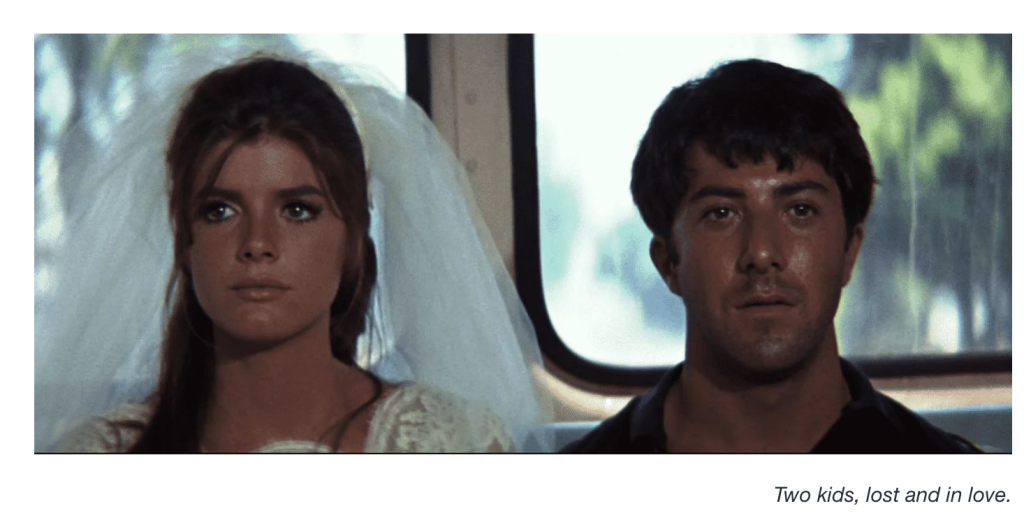
My Life as a Courgette
Certainly, Courgette’s success hinges on how engaged viewers become with the story. Despite the offscreen struggles faced by the plasticine-faced preteen characters, Barras accomplishes a remarkable feat, creating expressive figures with large heads and eyes, resembling ping-pong balls with attached irises.
The meticulous attention to detail extends to their tiny, well-dressed bodies, ensuring even medium shots convey significant emotion.
A group shot
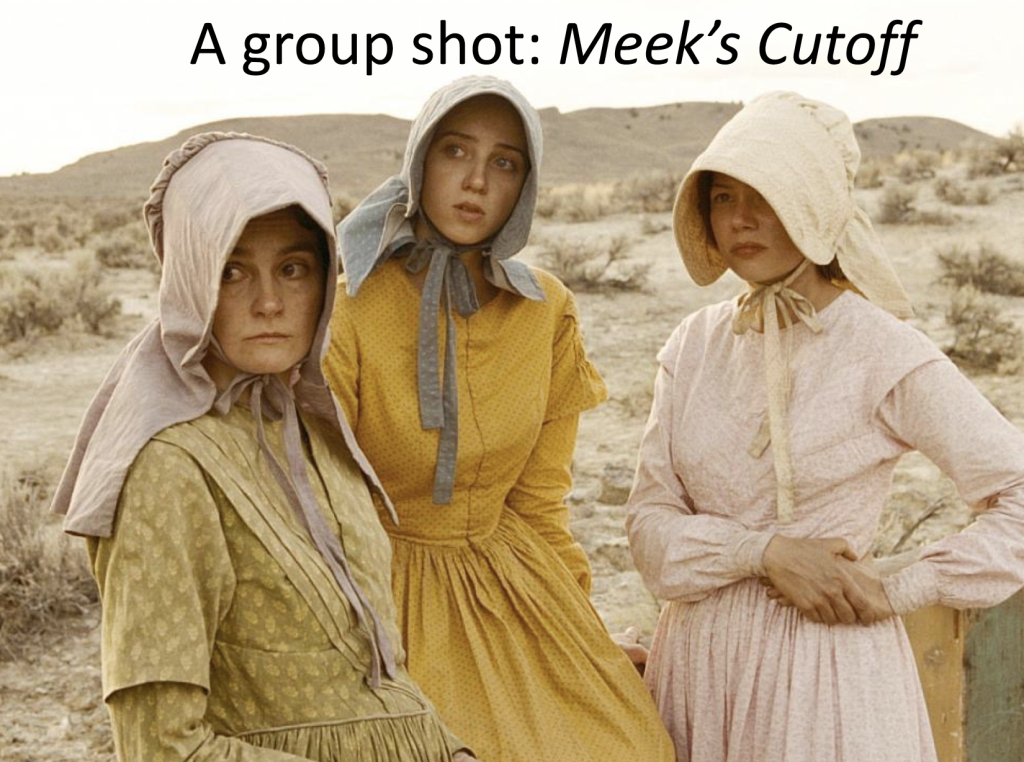
High angle shot
Within the animated film Lion King, the high-angle shot captures the dramatic moment when King Mufasa stands on the cliff’s edge, on the brink of peril. This impactful and memorable scene, etched in our memories, owes much of its resonance to the strategic use of the high-angle shot.



Low angle shot
A low-angle shot is a film shot taken from a camera angle positioned below the average eye line and pointing up. Low-angle views can be used in conjunction with wide shots, medium shots, close-ups, and most other standard cinematic shots.
We can analyze what elements are hidden in the camera. When a character is the leader if a film, it is incredible to compose their position for a director.
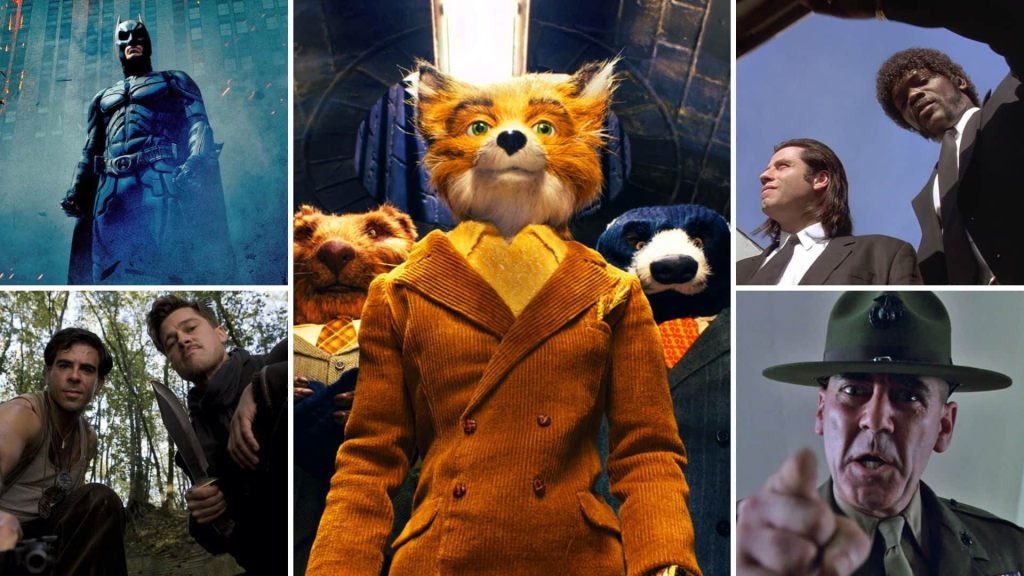

Even though low-angle shots are used for both Daniel and Eli to show the power and strength they had on the people around them, these low shots are used to show differences in the characters’ ambitions. At the beginning of the film, there are many shots of Daniel looking down into the hole of his first oil plant.
–
Other terms
Point of View Shot (POV)
In storytelling, whether through writing or visuals, the point of view is the narrative perspective, an essential element without which a story cannot be effectively conveyed. In film, the strategic use of POV shots allows filmmakers to dynamically shift perspectives, contributing to more nuanced and engaging narratives.
Moving Shots
- Pan Shot: The camera is affixed to a stationary base and captures footage by rotating along its axis, sweeping from left to right or right to left along the horizon.
- Tilt Shot: The camera has the flexibility to move upward or downward while maintaining its fixed axis.
- Traveling Shot (Dolly Shot): The camera can advance or retreat while remaining fixed on its axis.
- Crane Shot: Mounted on a mechanical crane, the camera has the capability to move inward and outward, as well as ascend and descend.
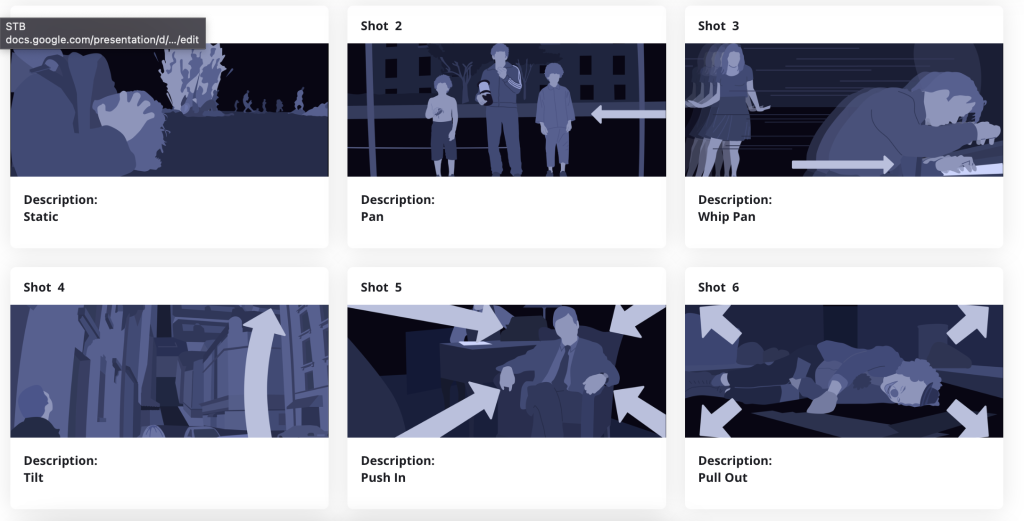
Reading the Mise-en-scène
THE BREADWINNER
The Breadwinner Study Guide / Link2
- In the animated film, camera angles work like they do in live-action films.
- Low angles make the Taliban look powerful, while long shots show space and change tones.
- Panning moves the story along, especially in the Elephant King’s tale, and shadows express feelings like fear or uncertainty. Zooming is less common in animation but is used at the end of the Elephant King story. The film also uses brightness to highlight important events in the background, like Razaq and Parvana examining a letter.
Isle of Dogs
The cinematography in “Isle of Dogs” demonstrates a deliberate and linear aesthetic, emphasizing side-to-side and up-and-down movements.
The use of modular camera moving equipment, engineered by Julian Pentecost, allowed for versatile and precise shots throughout the film. Notable scenes, such as the tour through the animal testing plant and the Saki Bar sequence, showcase the technical expertise in executing complex shots within tight spaces.
Medium shot:
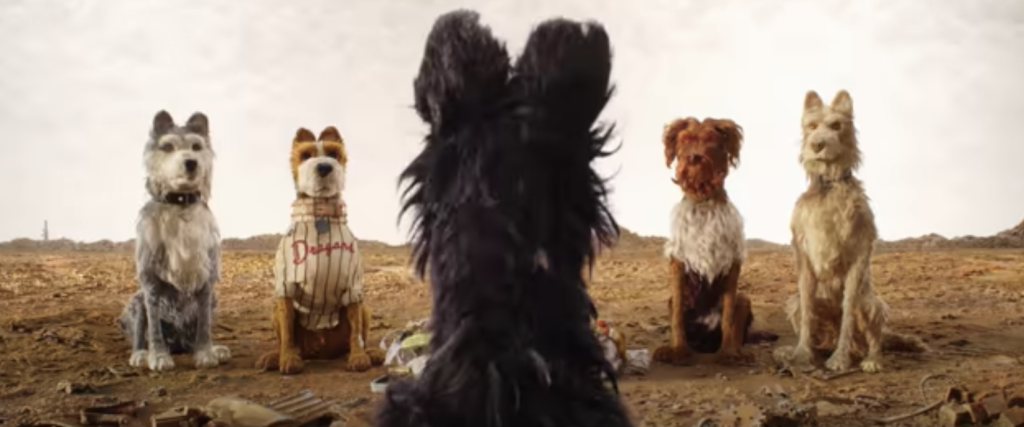
Studying so many terms about camera shots can help us understand how to build a shot to compose a story with consistency and logic.
And, to think about how a director uses this angle?

Animation Staging
It’s the audience’s attention.
The staging in animation, film, and theatre shares commonalities and overlaps in its primary objective of directing the audience’s attention.
However, the production implications differ, offering distinct medium resolutions through various strategies to emphasize what is most crucial in conveying your theme, narrative, scene, or performance.
When we think about our projects, it is important to know the skills of animation staging.
- Camera angle and position (perspective): Influences how characters are perceived and can convey emotions or power dynamics.
- Light and shadow (contrast): Enhances the visual impact of characters and adds depth to the scene.
- Character dynamics (performance or pace): Defines the interactions and movements of characters within the frame.
- Entry to the scene (expectant or sudden): Sets the tone for character introductions and influences audience expectations.
- Audio complement or emphasis: Sound elements can reinforce the visual impact of character placement and actions.
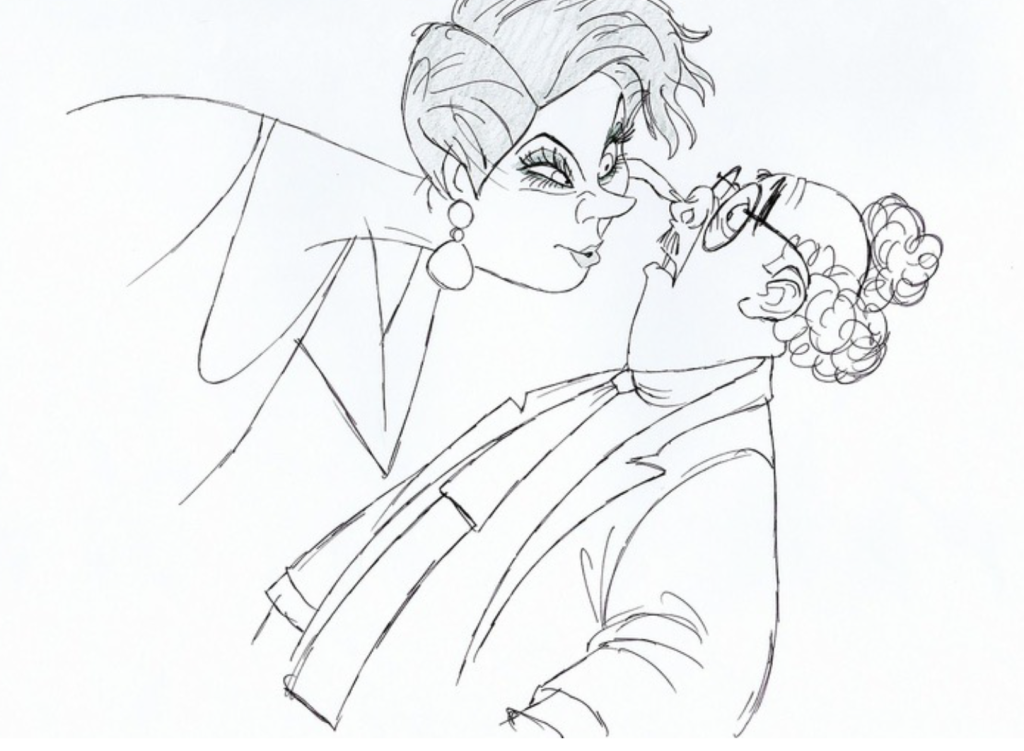
Designing the use of long, medium, and close-up shots:
- Consider the relevance of each shot to emphasize specific elements, control the flow, and manage timing.
- Establishing shots and events with visual and conceptual objectives identified:
- Clearly define visual and conceptual goals for establishing shots and events to ensure effective storytelling.
- Timing and pacing of shots:
- Pay attention to the timing and pacing of shots to maintain a cohesive and engaging narrative.
- Understand production implications of shot choices:
- Be aware of the production implications associated with different shot choices to make informed decisions during filmmaking.
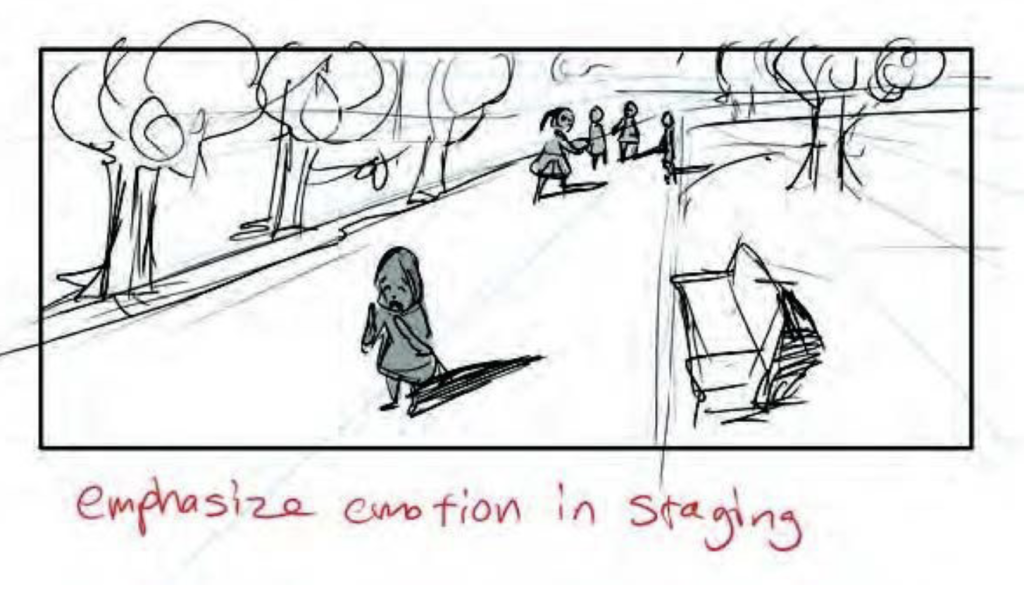
Background and setting
• Aesthetic clash with character
• Aesthetic
• Complexity/Clutter
• Distracting design/action
• Scale of key subject ( use close-up shots. )
–
The Essence of This Principle
- Maintain focus on relevant elements.
- Acknowledge that any physical object within a frame may evolve into a significant symbol.
- Avoid or edit out unnecessary elements.
–
Screen Direction
Screen direction is the direction in which actors or objects appear to be moving on the screen from the point of view of the camera or audience.
The rules of screen direction also need to govern camera positioning and movement.
- A direction in which actors/objects appear or move from the POV of people.
- Govern camera positioning and movement.
- We are always looking the way of the camera.
- Must in consistency
- Avoid audience confusion
It needs to be designed before we do animation.
Following the rule of screen direction is vital in film editing. It helps maintain consistency in movement and prevents confusion for the audience by using terms like “camera left” and “camera right” to guide direction within the frame.
For big animated projects, we decide the direction of the screen during the planning phase to make scenes flow smoothly. This screen direction is essential, and we figure it out in advance during the storyboard and animatic production stages in professional animation.
–
Screen Continuity
Once the screen direction is set, it needs to be consistent in every subsequent shot. This consistency extends to the movement and orientation of actors, ensuring they appear correctly in conversation, focus on the intended elements, and maintain logical travel directions, preventing confusion for the audience.
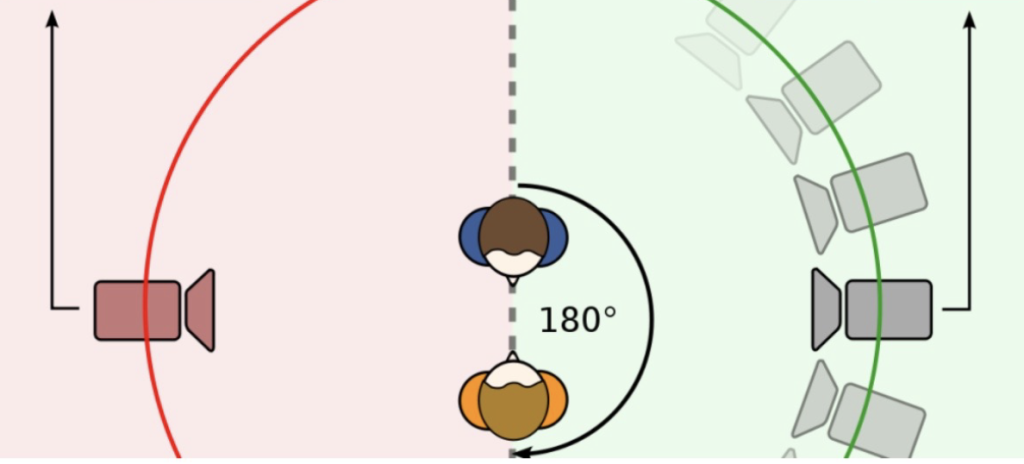
An imaginary line for dialogue.
Imagine a scene of two actors talking, face-to-face or in close-up. Now, jump to a bird’s-eye view above their heads and envision a straight line drawn from the crown of one actor’s head to the other’s. This is the 180 line that should govern your camera movement for the scene.
When you position the camera for a dialogue scene, the key is to keep the camera on one side of the imaginary axis along this straight line for the duration of the scene.
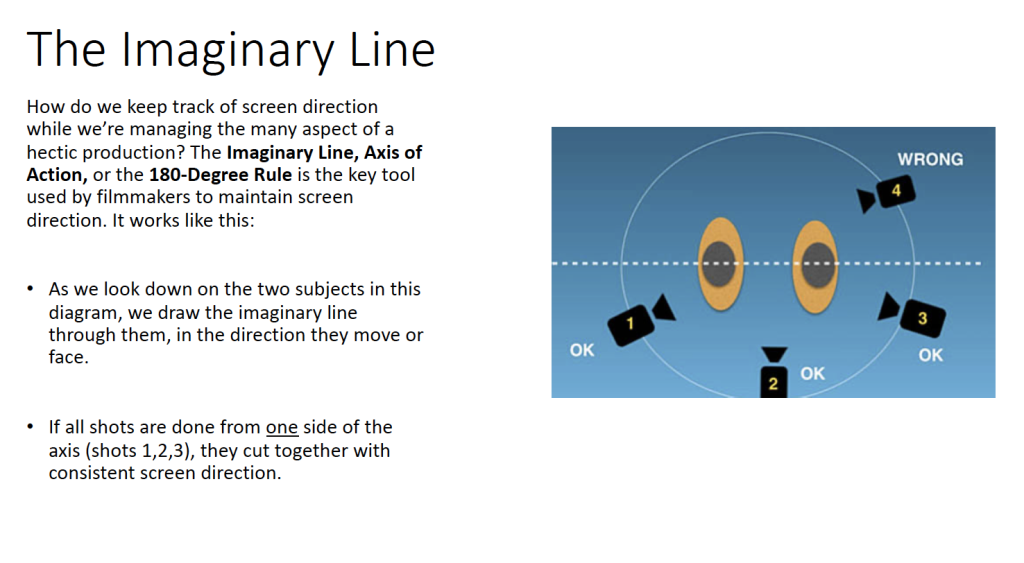
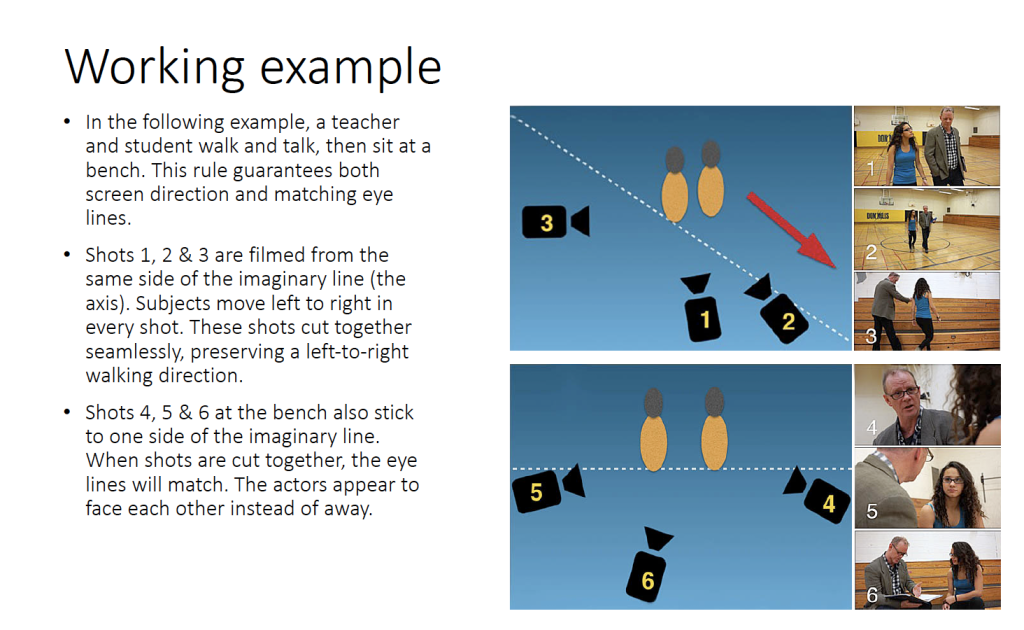
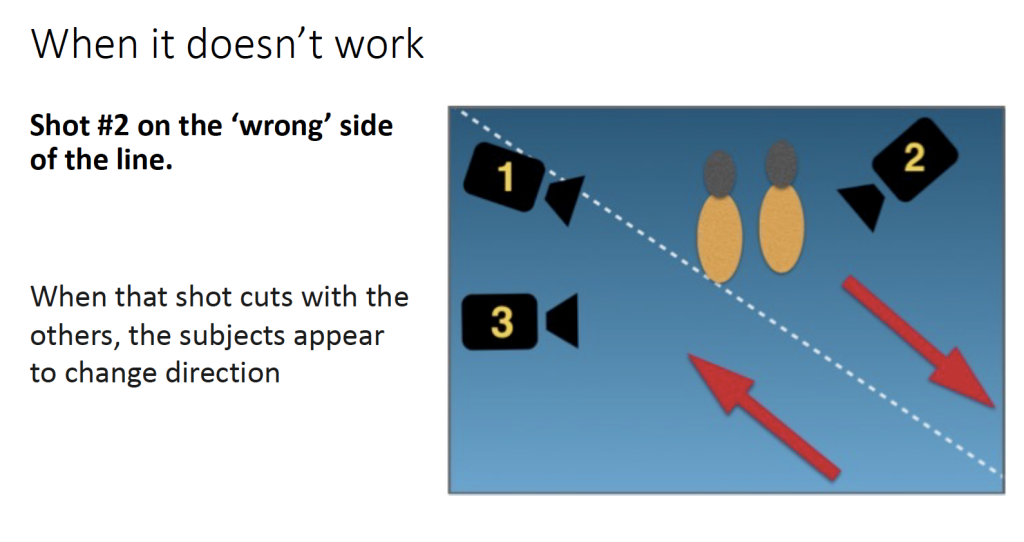
A lot can happen in 5 seconds.
Keep in mind: Your subject can move horizontally across the screen, either approaching or moving away from the camera. The directional movement remains consistent, as long as the camera avoids crossing the action axis.
